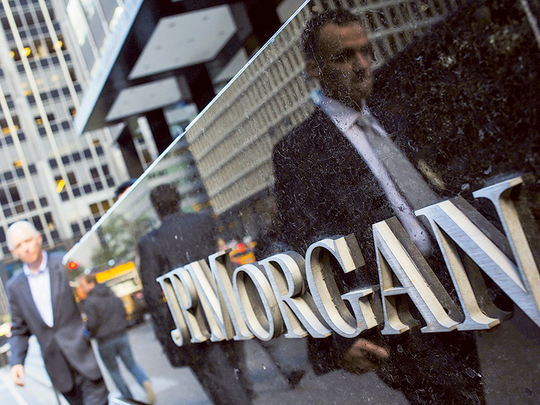
Washington: Big US banks will have to resume holding an extra layer of loss-absorbing capital against US Treasuries and central bank deposits from next month after the Federal Reserve said on Friday it would not extend a temporary pandemic regulatory break due to expire this month.
The Fed said it would, however, launch a formal review of the capital rule, known as the "supplementary leverage ratio," due to concerns it is no longer functioning as intended as a result of the central bank's emergency COVID-19 monetary policy measures.
While the Fed's decision to review the rule is a win for Wall Street banks, which have long argued the leverage ratio is fundamentally flawed, its refusal to extend the exemption, as many analysts had expected, came as a disappointment.
Banks tank
Shares of the largest US banks fell after the news, with JPMorgan Chase & Co losing as much as 4 per cent before closing down 1.6 per cent on the day. Bank of America Corp's and Citigroup Inc lost 1 per cent and 1.1 per cent , respectively.
"Wall Street bank stocks will get punished because now they will have to put more money aside," Edward Moya, senior market analyst at foreign exchange brokerage Oanda, said in an email.
He added, however, that the planned review of the leverage ratio "should alleviate concerns that this is a final decision." To ease Treasury market stress and encourage banks to lend to Americans struggling amid lockdowns, the Fed last April excluded Treasuries and central bank deposits from the leverage ratio until March 31.
The issue has become a political hot potato, with powerful Democrats pressuring Fed Chair Jerome Powell to deny Wall Street what they say is an unwarranted break that could increase systemic risks. They point out that big banks have plenty of cash to buy back shares and issue dividends.
The leverage ratio was adopted after the 2007-2009 financial crisis as a safeguard to prevent big banks from manipulating other capital rules. It requires them to hold additional capital against assets regardless of their risk.
But the ratio is rapidly becoming the primary limit on banks' balance sheets which have swelled as a result of the Fed pumping cash into the economy amid the pandemic.
In the last year, the Fed has nearly doubled its balance sheet to more than $7.7 trillion through around $3.4 trillion in bond purchases. That extraordinary intervention, along with near-zero interest rates, aims to keep money flowing through the banking system.








